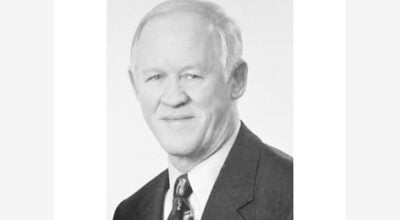Ask Trooper Rob: Traditional ‘Stop’ placards obsolete
Published 11:24 pm Thursday, May 24, 2012
Ever wonder about the “shark fin” or “Stop” placards on the hood of Michigan State Police patrol vehicles?
The Plexiglas “Stop” placards on MSP patrol car hoods were originally an imitation of similar, smaller signs on the front fender of MSP motorcycles used for highway patrol in the 1920s and 1930s. Back then, the motorcycle troopers often did “side stops,” basically pulling up along a motorist to signal them to stop. The driver could look out their window and spot the “Stop” sign, even if the trooper was back a bit and hard to see.
The MSP quit using bikes in 1942 during World War II, but it started putting the larger “Stop” placards on patrol car hoods around 1949. These placards had multiple uses: for side stops, as in the old motorcycle days; for blockades, when troopers would block intersections with their cars to check for bank robbers (the hood signs made it unnecessary to keep red lights activated during daylight) and for nighttime response to investigations at homes. Patrol car door shields did not reflect until 1954 (that’s when MSP patrol cars changed from black to the current bright MSP blue with lightning bolt door shields), so by lighting up the hood “Stop-State Police” signs when they pulled into a driveway at a house, the troopers felt the residents could look out and see it was a police car and feel safer.
Today, the placards are obsolete, but kept for tradition. The MSP no longer trains troopers to do side stops in heavy traffic; we quit doing blockades around 1981; and, in today’s police tactics, police no longer really want to illuminate their presence. The door shields now reflect, too.
An advertising campaign that launched Click It or Ticket enforcement zones in 2005 is returning to TV and radio, warning motorists about stepped-up seat-belt enforcement slated to begin in a week.
Enforcement will involve local police departments, sheriff offices and the MSP.
Trooper Albert Souden, 29, enlisted in the MSP on Aug. 30, 1954. He was assigned to the Brighton Post and, on Sept. 3, 1959, was on day shift patrol. About 4 p.m., he did not arrive at his home for supper. About 6 p.m., Mrs. Souden called the post. Sgt Ploehn took the call and was equally puzzled. The Sergeant called East Lansing headquarters and an immediate manhunt began.
A check of the radio log revealed that Souden had been assigned to a robbery of $75 from a factory office.
Souden investigated and discovered a license plate of a suspicious vehicle in the area. The plate was registered to Alvin Knight of Argentine, where he went to interview the suspect. After knocking on the door, Souden was greeted by Knight answering the door with a gun. After disarming the Suden at gunpoint, Knight ordered Souden to his patrol car and forced him to drive to a secluded, wooded area.
As Souden was exiting the patrol car, Knight shot him in the back of the head with the trooper’s own service revolver. Stripping the trooper to his underwear, Knight buried the Souden and the uniform in separate graves.
The graves and car were camouflaged, and Knight made his way to his East Tawas cabin.
The manhunt was revealing few clues until it was discovered Knight had a cabin. East Tawas troopers arrived at the cottage and arrested Knight without incident. Because of search-and -seizure rules, Souden’s service revolver could not be admitted into evidence ,and Knight refused to confess. After being confronted by Mrs. Souden about the disappearance of her husband, Knight asked to call his mother. After speaking to his mother, Knight broke down and cried, giving a full confession and drawing a map of where the body, uniform and car were hidden.
Knight pleaded guilty to second-degree murder and after his release, committed a home invasion where he was shot by the home owner. Knight was sentenced to life in prison where he later died.
Mrs. Souden was presented with a posthumous Valor Medal. Souden is buried in his hometown of Brant and was the 22nd trooper to die in the line of duty.





